December 19, 2023
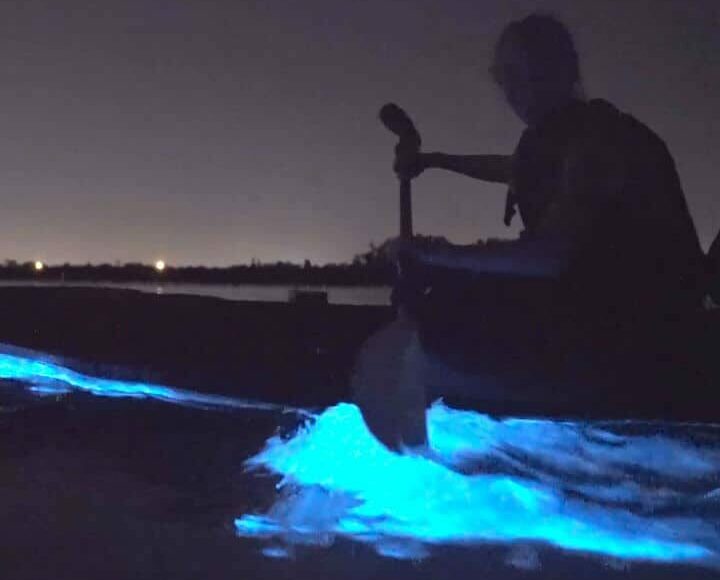
Offering an entrancing blend of nature’s magic and human-powered adventure. This guide delves into the wonders of bioluminescence in Auckland with top tips.

Bioluminescence, the emission of light by living organisms, has a variety of names, synonyms, and variations that highlight its diverse nature and applications. Here are some of the most common:
Bioluminescence: The primary term, referring to the production and emission of light by a living organism.
Chemiluminescence: A broader term that includes bioluminescence. Chemiluminescence refers to the emission of light as a result of a chemical reaction, which may or not involve living organisms.
Luciferin-Luciferase System: Refers to the specific biochemical mechanism in many bioluminescent organisms, where the molecule luciferin is oxidized with the help of the enzyme luciferase to produce light.
Photoprotein Bioluminescence: A variant of bioluminescence where the light-emitting molecule is a photoprotein, which is a protein combined with a light-emitting cofactor.
Marine Bioluminescence: A term specifically used for bioluminescence observed in marine organisms, like fish, jellyfish, and plankton.
Terrestrial Bioluminescence: Refers to bioluminescence found in terrestrial organisms such as fireflies and certain fungi.
Biophotonic: Related to bioluminescence, this term describes the interaction of biological organisms with photons or light particles.
Biofluorescence: Often confused with bioluminescence, biofluorescence involves absorbing light at one wavelength and emitting it at another. It’s a passive process, unlike the active light generation in bioluminescence.
Glowing Organism: A colloquial term sometimes used to refer to any organism that exhibits bioluminescence.
Natural Glow: Another non-scientific term used to describe the phenomenon of bioluminescence in a general sense.
Biogenic Light: A term that emphasizes the biological origin of the light.
Living Light: A poetic or informal term often used in literature or media to describe bioluminescence.
Phosphorescence: Commonly mistaken for bioluminescence, phosphorescence is a type of photoluminescence related to fluorescence, where materials slowly release absorbed light.Each of these terms highlights a different aspect or type of bioluminescence, from the specific biochemical pathways involved to the types of organisms that exhibit the phenomenon.

Bioluminescence is a fascinating natural phenomenon where living organisms emit light. This light emission is the result of a chemical reaction that occurs inside the organism. Here’s a basic overview of how this process works:
Chemical Reaction: At the core of bioluminescence is a chemical reaction. This reaction typically involves at least two main substances: luciferin and either oxygen or a similar molecule. Luciferin is a light-emitting molecule found in bioluminescent organisms.
Enzyme Catalysis: An enzyme called luciferase acts as a catalyst in this reaction. The presence of luciferase speeds up the reaction between luciferin and oxygen without being consumed in the process.
Oxidation of Luciferin: The actual light-emitting reaction is an oxidation process. When luciferin is oxidized, it is transformed into an excited state. This means that the electrons in the luciferin molecule are boosted to a higher energy level.
Emission of Light: As the excited luciferin returns to its ground state, the energy is released in the form of light. The color of this light can vary depending on the specific type of luciferin and other factors such as the pH and temperature of the environment. Common colors include green, blue, and yellow.
Role of Other Compounds: In some organisms, additional compounds known as photoproteins are involved. Photoproteins are already in an oxygenated form and emit light when they are triggered by a specific ion, like calcium.
Energy Efficiency: One remarkable aspect of bioluminescence is its energy efficiency. The light produced in this chemical reaction is almost 100% light with very little heat, making it an incredibly efficient form of light production.
Purposes of Bioluminescence: Organisms use bioluminescence for various purposes, including communication, mating, camouflage, warning, and predation.
This process of light emission in bioluminescent organisms is a sophisticated and efficient biological adaptation. It’s a fascinating example of how living organisms have evolved complex chemical pathways to aid in their survival and interaction with their environment.
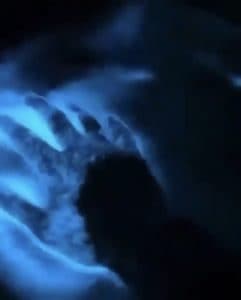
The primary allure of Auckland Bioluminescence kayak tours lies in the ability to offer a rare glimpse into an enchanting natural light show. The gentle paddling through calm waters under a starry sky, accompanied by the glow of bioluminescent organisms, creates an ethereal experience. It’s not just visually stunning; it’s also a peaceful, serene adventure that connects you with nature in a unique way.
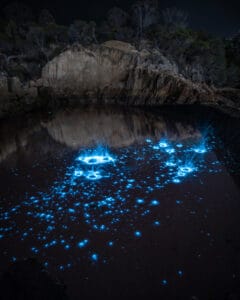
The value of experiencing Auckland Bioluminescence first-hand lies in its rarity and the unique perspective it offers on the natural world. It’s an opportunity to witness one of nature’s most incredible displays, a phenomenon that many people may not even be aware exists. This experience not only educates but also instills a deeper appreciation for marine ecosystems and their inhabitants.
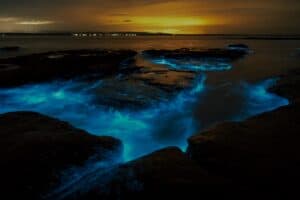
Auckland Bioluminescencent kayak tours are usually located in areas with significant concentrations of bioluminescent organisms. These include coastal regions with warm, shallow waters, which are ideal for phytoplankton. Prospective adventurers should make an enquiry with Social Nature Movement to book a tour.
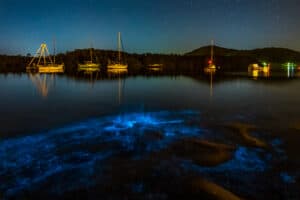
For those looking to book a bioluminescence kayak tour in Auckland, the process typically involves selecting a preferred location and tour provider, checking availability, and making a reservation. Prospective adventurers should make an enquiry with Social Nature Movement to book a tour; making it convenient to secure a spot on these popular tours.
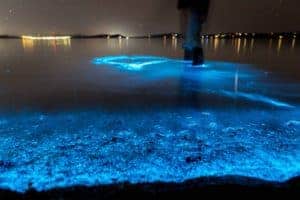
Auckland Bioluminescence kayak tours epitomise the harmony between human-powered movement and nature-based activities. Kayaking is an environmentally friendly way to explore, requiring no fuel other than human energy, thus ensuring the preservation of the delicate ecosystems where bioluminescence occurs.
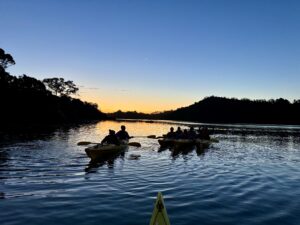
Immersive Social Experiences: Must do in Auckland!
These Auckland Bioluminescence tours also offer an immersive social experience. They are often conducted in small groups, fostering a sense of community and shared wonder. Participants can bond over the shared experience of navigating through the glowing waters, creating memories that last a lifetime.
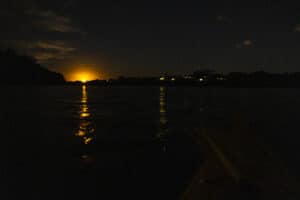
Conclusion: A Unique Blend of Adventure and Nature
Auckland Bioluminescence kayak tours are more than just an outdoor activity; they are an immersive experience that combines adventure, education, and environmental awareness. Whether you are an avid kayaker, a nature enthusiast, or simply looking for a unique experience, these Auckland Bioluminescence kayak tours offer an unforgettable journey into one of nature’s most spectacular displays. By engaging in this activity, you not only witness the magic of bioluminescence but also contribute to the appreciation and preservation of natural wonders.
email support@snm.nz or call us on 0800 76 62 66